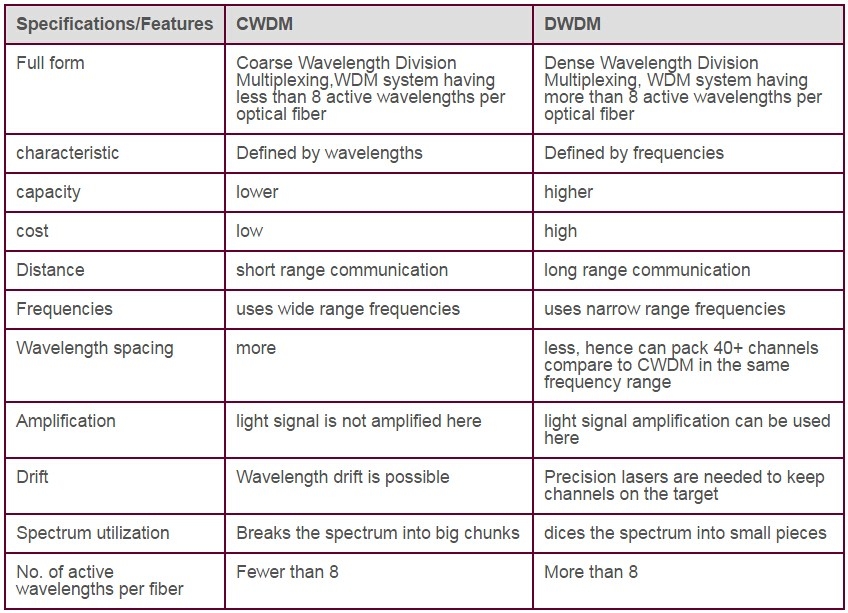CWDM and DWDM are two acronyms that mobile operators are hearing a lot as they densify their networks with small cells. CWDM is coarse wave division multiplexing and DWDM is dense wave division multiplexing. Wave division multiplexing is a way to increase the bandwidth of fiber by combining optical signals of different wavelengths on one strand of fiber. This technology is appropriate for small cell deployments because small cells are typically connected to base stations by fiber fronthaul.
Operators implement WDM by adding modules to their base station equipment. Coarse wavelength division multiplexers (CWDM) are modules that increase the amount of bandwidth a fiber optic system can carry by transmitting multiple signals at various wavelengths along the fiber optic cables. Dense wavelength division multiplexers (DWDM) are modules that put data from different sources together on a fiber optic cable. DWDM modules further increase system bandwidth and capacity by using closely spaced wavelengths to carry multiple signals on the same cable.
CWDM supports up to 18 wavelength channels transmitted through a fiber at the same time. To achieve this, the different wavelengths of each channel are 20nm apart. DWDM supports up to 80 simultaneous wavelength channels, with each of the channels only 0.8nm apart. CWDM technology offers a convenient and cost-efficient solution for shorter distances of up to 70 kilometers. For distances between 40 and 70 kilometers, CWDM tends to be limited to supporting eight channels. Unlike CWDM, DWDM connections can be amplified and can therefore be used for transmitting data much longer distances.
The sweet spot for CWDM is up to 10 Gigabit Ethernet and 16G Fibre Channel. And it is quite unlikely capacities with increase beyond this in the future. DWDM however, is able to handle higher speed protocols up to 100Gbps per channel making it a more suitable technology for higher speed protocols.
Traditionally CWDM components have been lower in cost making it more popular than DWDM. Now the price for both solutions is comparable. With higher speeds, more channel capacity, longer distances and passive networking, DWDM is the technology of choice for green field installations.
A Comparison between CWDM and DWDM

The primary difference between DWDM and CWDM is the channel spacing (CWDM has almost 100 times wider channel spacing) and the required frequency stability. Due to wider CWDM channels, the number of channels (lambdas) available on the same link is significantly reduced, but the optical interface components do not have to be as precise as DWDM components. CWDM equipment is thus significantly cheaper than DWDM equipment.
Please note that relaxed frequency stability might preclude the use of optical amplifiers, limiting the total CWDM optical span to tens of kilometers.



















































































































